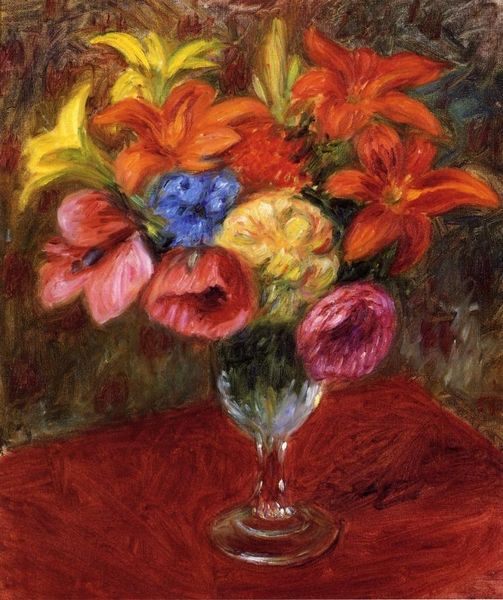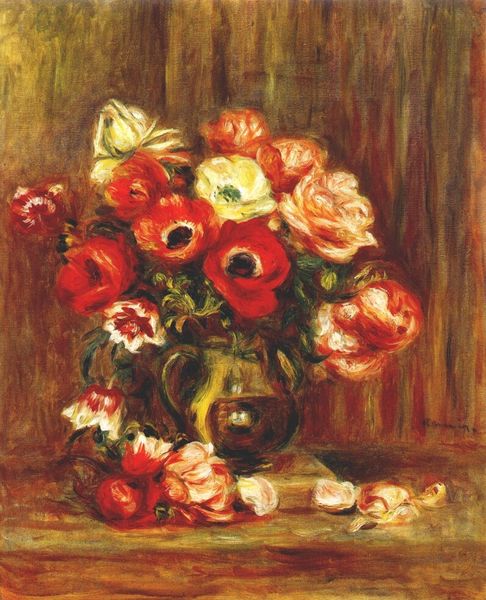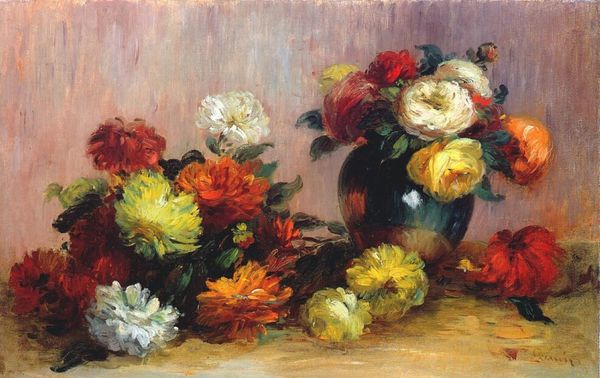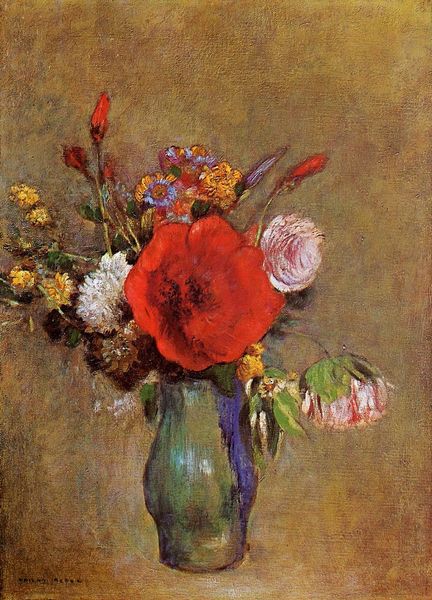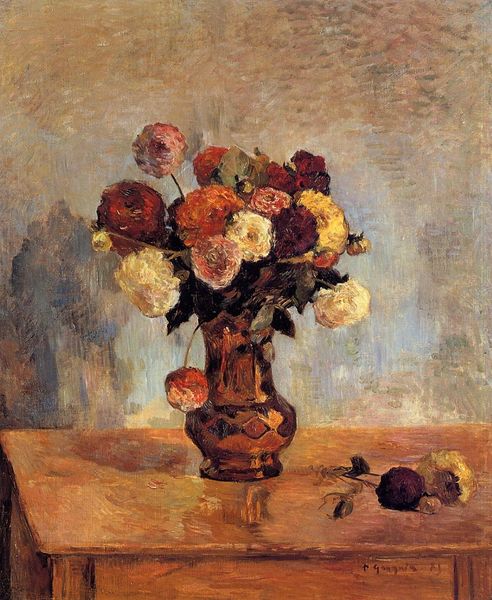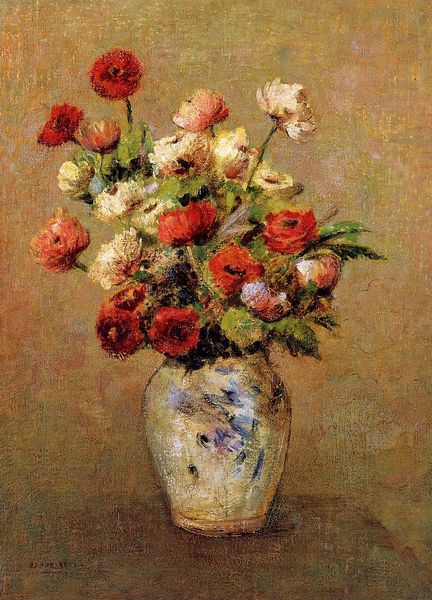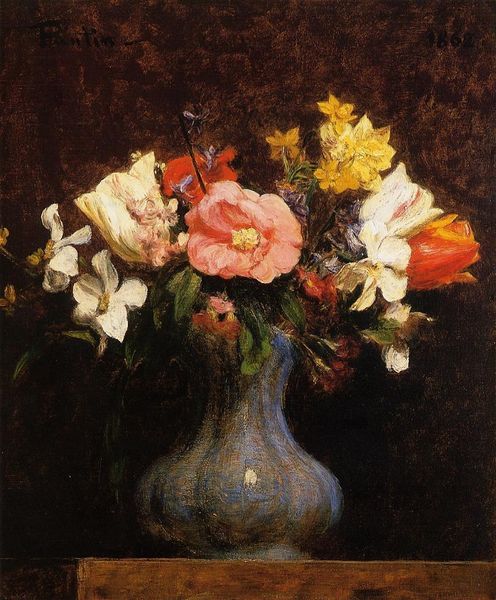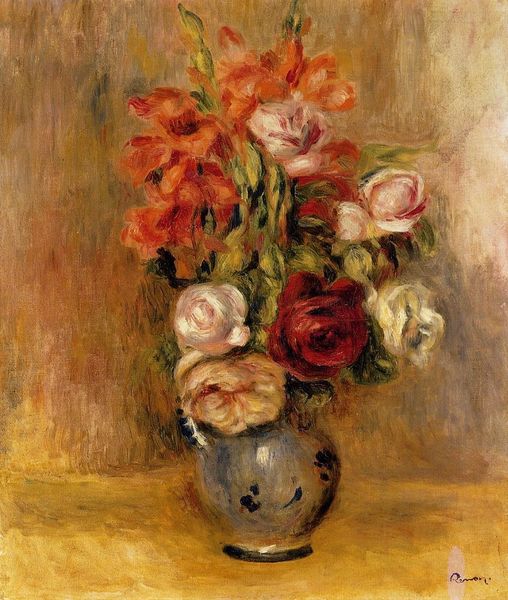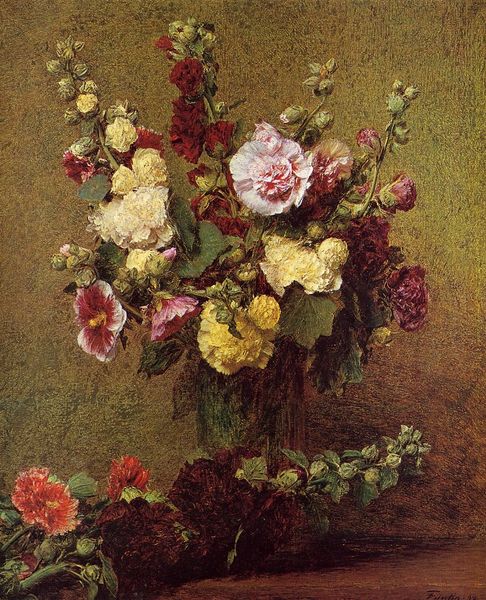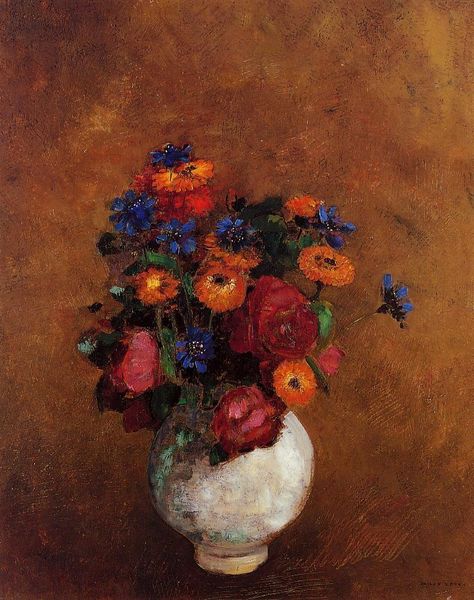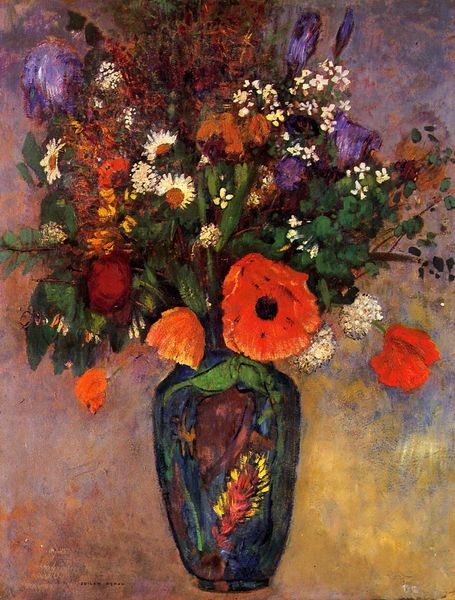
Copyright: Public domain
Curator: Ah, there's nothing quite like the exuberant charm of a floral still life. We’re looking at Renoir's "Flowers in a Vase," created in 1898, a dance of oil paint trying to capture the vitality of plants on canvas. Editor: It does have that lively feel, doesn’t it? I'm immediately drawn to the color palette. All those reds and yellows—a celebration of warm tones almost fighting to escape the vase! It feels…optimistic, especially given the historical context of the late 19th century. Curator: Optimistic is the perfect word. Renoir really lets loose here, doesn't he? The impasto is so thick, you can practically smell the roses and feel their velvety petals. It's like he wanted to preserve the very essence of the bloom. I feel it’s trying to hold onto summer as the colder months approach. Editor: Definitely, though, thinking about it more critically, the vase is still just a container and floral arrangements were more about class displays of wealth and status. And while Renoir’s approach certainly softens that association, the flowers are still arranged in service of aesthetics rather than left in the garden to grow naturally. What's the implication of picking, selecting, cutting? Curator: Hmmm, that’s an interesting and somewhat darker way to consider these cheerful bunches! I always considered the transience a poignant consideration on capturing something fleeting and trying to pause beauty. But in saying that I suppose one is, in essence, killing them... Maybe he was showing us beauty has an expiration date...or did I kill the vibe a bit much? Editor: Not at all! It’s vital to look at these pieces critically to allow us to understand and move beyond mere "pretty picture" syndrome. It's a skill, you know, learning to love and critique at the same time. So in truth what seems pretty here may point to social and power dynamics in different societies. Curator: Well, you’ve certainly given me food for thought... Next time I arrange some flowers, I might have a little moment of existential guilt. It's amazing how a simple painting can reveal hidden perspectives. Editor: Precisely. I’ll never see a Renoir the same way! Perhaps art is a mirror—reflecting our joys, as well as the thornier realities of our world.
Comments
No comments
Be the first to comment and join the conversation on the ultimate creative platform.
